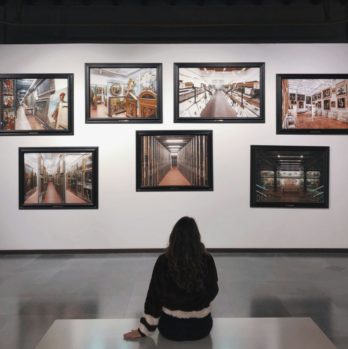Alvar Aalto Buildings: An In-depth Exploration

Alvar Aalto Buildings: A Timeless Legacy
Introduction:

Alvar Aalto, a pioneer of modern architecture, has left an indelible mark on the architectural world with his iconic buildings. This article provides a comprehensive overview of Alvar Aalto buildings, exploring their significance, types, popularity, and unique characteristics.
Understanding Alvar Aalto Buildings
1. Alvar Aalto Buildings: An Overview
Alvar Aalto buildings represent a harmonious blend of functionality, aesthetics, and natural elements. Aalto believed in creating structures that seamlessly integrated with their surroundings, showcasing his deep appreciation for the Finnish landscape. His designs are characterized by the use of natural materials, organic forms, and innovative spatial arrangements.
2. Types of Alvar Aalto Buildings
Aalto’s architectural repertoire encompasses a wide range of building types, including residences, public buildings, museums, and cultural centers. Notable examples include Villa Mairea, the Finlandia Hall, and the Paimio Sanatorium. Each building exemplifies Aalto’s meticulous design approach and his commitment to the user experience.
3. Popular Alvar Aalto Buildings
Certain Alvar Aalto buildings have gained immense popularity due to their architectural significance and cultural impact. Structures like the Helsinki House of Culture and Säynätsalo Town Hall have become architectural landmarks, attracting visitors from around the world. These buildings exemplify Aalto’s ability to create spaces that are not only functional but also visually captivating.
Quantitative Insights into Alvar Aalto Buildings
1. Dimensions and Scale
Alvar Aalto buildings vary in size and scale, catering to different needs and contexts. Ranging from small residences to large-scale public buildings, Aalto’s designs reflect his understanding of human proportion and spatial utilization. Quantitative measurements of the buildings’ dimensions provide a deeper understanding of their scale and layout.
2. Materials and Construction Techniques
One defining aspect of Aalto’s architecture is his innovative use of materials. Quantitative analysis can shed light on the types of materials employed in construction, such as wood, brick, and concrete. Additionally, exploring construction techniques used in Aalto’s buildings can provide insight into his approach to structural integrity and functionality.
Distinguishing Characteristics of Alvar Aalto Buildings
1. Organic Forms and Natural Light
Alvar Aalto buildings are known for their organic shapes, inspired by natural forms. Aalto believed that architectural design should respond to human needs and maximize the use of natural light. The incorporation of large windows and skylights creates a seamless connection between the interior and exterior, enhancing the overall user experience.
2. Integration with Nature
Aalto’s buildings seamlessly merge with their natural surroundings, blurring the boundaries between interior and exterior spaces. His designs often incorporate courtyards, gardens, or terraces, allowing occupants to connect with nature. This unique feature sets Alvar Aalto buildings apart from traditional architectural styles.
A Historical Review of Advantages and Disadvantages
1. Advantages of Alvar Aalto Buildings
Throughout history, Alvar Aalto buildings have been celebrated for their human-centered design, functionality, and aesthetic appeal. Their timeless qualities have ensured their longevity and continued admiration from architects and enthusiasts alike. Aalto’s ability to marry architectural vision with practicality is one of the biggest advantages of his buildings.
2. Disadvantages and Criticisms
While Alvar Aalto buildings are widely appreciated, they are not without criticism. Some argue that certain designs lack flexibility and adaptability to modern needs. Additionally, the extensive use of natural materials may require substantial maintenance over time. However, these criticisms are outweighed by the enduring appeal and architectural significance of Aalto’s designs.
Conclusion:
Alvar Aalto buildings continue to captivate and inspire generations of architects and design enthusiasts. From their distinctive organic forms to their seamless integration with nature, Aalto’s buildings are a testament to his visionary approach. Their enduring popularity and timeless qualities cement Alvar Aalto’s legacy as one of the greatest architectural pioneers of the 20th century.
[Conclude the article by providing a brief summary of the key points discussed and encouraging readers to explore Alvar Aalto buildings firsthand.]











